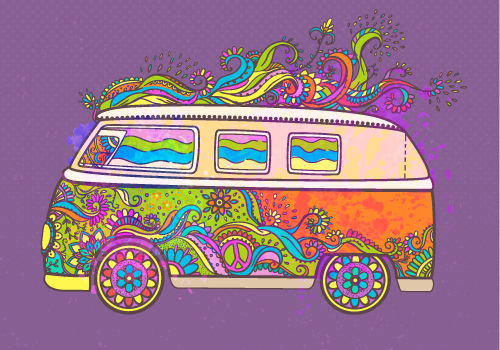Psychedelic art is believed to be art influenced by hallucinogenic drugs and the rock music of the sixties and seventies. However, it is a lot more than the trippy experiences of the artists. Contrary to popular belief, it is steeped in American politics of the sixties and is associated with the birth of the counterculture movement.
It is said that the birth of psychedelic art was Albert Hoffman's discovery of LSD, which was embraced by the artists who found their inspiration in those experiences. This association between psychedelic art and hallucinogenic drugs has been criticized, as the art form was looked upon as a mere attempt to recreate the sensual and visual experiences of the artist during their experience, holding no further aesthetic value. Those who were more tolerant spotted the connection between psychedelic art and historic genres such as Art Nouveau, Op-art and Surrealism.

The end of World War II in 1945 brought about a post-war economic boom in the U.S. It also brought about a tremendous spike in the birth rate, known as 'the baby boom.' This generation of 'baby boomers' questioned the political and social values of post-war America, and were the ones responsible for the birth of the psychedelic art movement. They protested against the cultural values of their parents, war, social norms of the consumerist America in the 1950s and segregation. The rejection of the mainstream culture gave rise to new music genres like psychedelic rock with new cover artworks, which stand as great examples of psychedelic art till date.
Wes Wilson, Peter Max and Victor Moscoso were arguably the best-known poster artists in the sixties and their work has shaped a whole new generation of musicians. Wes Wilson was the one to introduce the popular psychedelic font which made the letters appear as if they were moving, while Victor Moscoso was the one to use the vibrating colours effect. During the golden years of psychedelia, the very same aesthetics were used for poster works of underground comix.
Psychedelic art, with all of its interesting features, became part of the world it initially fought against. In the seventies, the recognizable imagery of psychedelia from contrasting colours and kaleidoscopic patterns to morphing objects and surrealistic subject matter was used to sell different kinds of products. Today, with the availability of graphic software, it has become easier to represent psychedelic experiences.